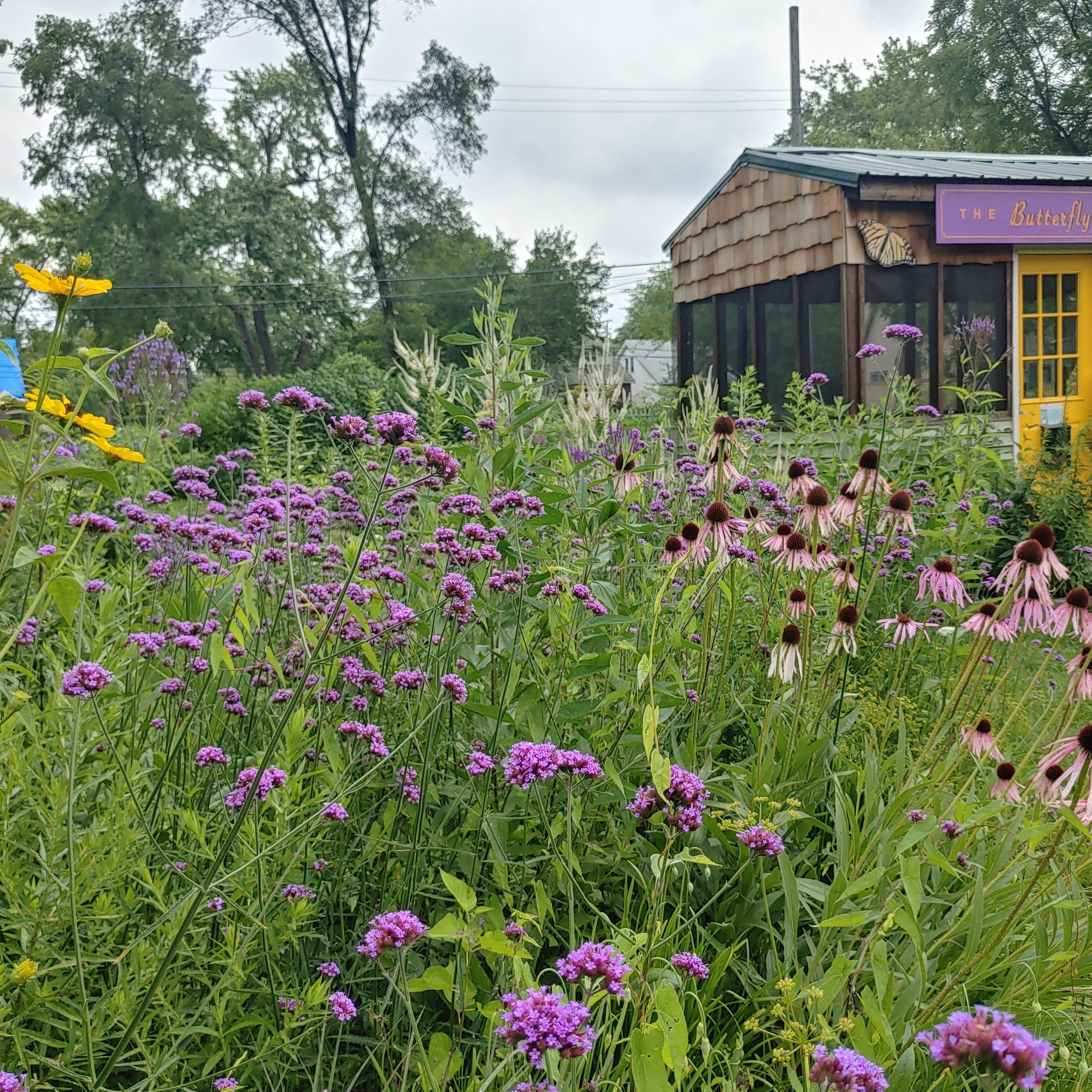Echinacea pallida, Pale Coneflower, Quart pot
Echinacea pallida, Pale Coneflower.
FS-PS, Zone 3, blooms June-July, 3’ x 1-1.5’, deer and rabbit resistant, medium to dry, sand to some clay.
The tallest of the Echinacea’s at 3’, this lovely plant is gorgeous planted alongside grasses. It’s an iconic prairie plant that grows a long a tap root which makes it difficult to move, once established. An adaptable plant that is tolerant of drought, heat, humidity, and poor soils. Divide clumps when they become overcrowded (about every 4 years). Plants usually rebloom without deadheading. However, prompt removal of spent flowers improves general appearance. Freely self-seeds if at least some of the seed heads are left in place. This plant doesn’t like too much water, which may cause root rot. Grows best in full sun and well-drained soil. Their roots are still being used today to make medicinal tonics.
Attracts native bees, honey bees, butterflies and hummingbirds. Because it blooms in June, it provides an early source of nectar for insects. Goldfinches relish their seeds. It is also the host plant of the Ottoe Skipper butterfly (an adorable bright yellow cutie).
Echinacea pallida, Pale Coneflower.
FS-PS, Zone 3, blooms June-July, 3’ x 1-1.5’, deer and rabbit resistant, medium to dry, sand to some clay.
The tallest of the Echinacea’s at 3’, this lovely plant is gorgeous planted alongside grasses. It’s an iconic prairie plant that grows a long a tap root which makes it difficult to move, once established. An adaptable plant that is tolerant of drought, heat, humidity, and poor soils. Divide clumps when they become overcrowded (about every 4 years). Plants usually rebloom without deadheading. However, prompt removal of spent flowers improves general appearance. Freely self-seeds if at least some of the seed heads are left in place. This plant doesn’t like too much water, which may cause root rot. Grows best in full sun and well-drained soil. Their roots are still being used today to make medicinal tonics.
Attracts native bees, honey bees, butterflies and hummingbirds. Because it blooms in June, it provides an early source of nectar for insects. Goldfinches relish their seeds. It is also the host plant of the Ottoe Skipper butterfly (an adorable bright yellow cutie).
Echinacea pallida, Pale Coneflower.
FS-PS, Zone 3, blooms June-July, 3’ x 1-1.5’, deer and rabbit resistant, medium to dry, sand to some clay.
The tallest of the Echinacea’s at 3’, this lovely plant is gorgeous planted alongside grasses. It’s an iconic prairie plant that grows a long a tap root which makes it difficult to move, once established. An adaptable plant that is tolerant of drought, heat, humidity, and poor soils. Divide clumps when they become overcrowded (about every 4 years). Plants usually rebloom without deadheading. However, prompt removal of spent flowers improves general appearance. Freely self-seeds if at least some of the seed heads are left in place. This plant doesn’t like too much water, which may cause root rot. Grows best in full sun and well-drained soil. Their roots are still being used today to make medicinal tonics.
Attracts native bees, honey bees, butterflies and hummingbirds. Because it blooms in June, it provides an early source of nectar for insects. Goldfinches relish their seeds. It is also the host plant of the Ottoe Skipper butterfly (an adorable bright yellow cutie).






